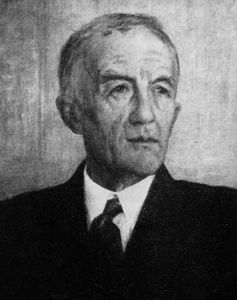EDWIN LUTYENS and Herbert Baker went back a long way. They had worked together in the same architectural firm at the beginning of their careers and were friends. However, their long-standing friendship was stretched to breaking point by the strain of their differences over the project. The points of disagreement, which were expressed through angry exchanges by post, included the location and shape of the Council House (the Parliament house).
The Council House was originally meant to be a part of the complex that is now the Rashtrapati Bhavan. However, the Montagu-Chelmsford reforms of 1919 necessitated the construction of a bigger, independent complex.
Baker had drawn up a triangular design. The plan was to have a building in the shape of an equilateral triangle. The three sides would have housed the Legislative Assembly, the Council of State and the Chamber of Princes. At the centre would have been an imposing dome.
However, Lutyens staunchly opposed the triangular design. He felt it did not fit in with the larger scheme of things. He insisted that the building be based on a “circular Colosseum design”.
On January 10, 1920, the New Capital Committee decided in favour of Lutyens’s idea. He said in response: “I have got the building where I want it and the shape I want it.” Baker admitted that he had been “declared out”. Baker’s plan had also been more grandiose and the scale was reduced in the reworked design.
Also read
- PM Modi inaugurates Kartavya Bhawan: How the Central Vista project redefines India's administrative core
- Historic move: Parliament session to shift to new building from today; members gather for photo op
- 'Inauguration was an opportunity for disqualified to see new Parl building'; Anurag Thakur mocks Rahul Gandhi
- New Parliament building reflects aspirations of new India: PM Modi
- Parliament: Congress calls PM Modi 'self-glorifying authoritarian', RJD's 'coffin' remark draws ire
- Parliament opening: Ceremony begins with puja, PM installs 'Sengol' inside LS chamber
Lutyens and Baker were at loggerheads with regard to the gradient of the slope down from the Government House (Rashtrapati Bhavan). Baker had won the debate on the issue of the gradient, much to the angst of Lutyens, who wrote to his wife Emily: “I am having difficulty with Baker. You remember the perspective showing the secretaries with Government House beyond. Well, he has designed his levels so that you will never see Government House at all (!) from the Great Place. You will see (only) the top of the dome!”
Baker’s view was that the two secretariat blocks (the North and South Blocks) and the Government House in the centre should form “one high platform expressing the importance of the unity of the viceroy with his government”.
In an obituary to Lutyens, Baker wrote: “Looking after these many years―and the capital buildings of Delhi stand united in conception together, and are, I think I may say, acclaimed by all―I can see more clearly that our personal differences had their roots in our natures and outlook on our art.”


